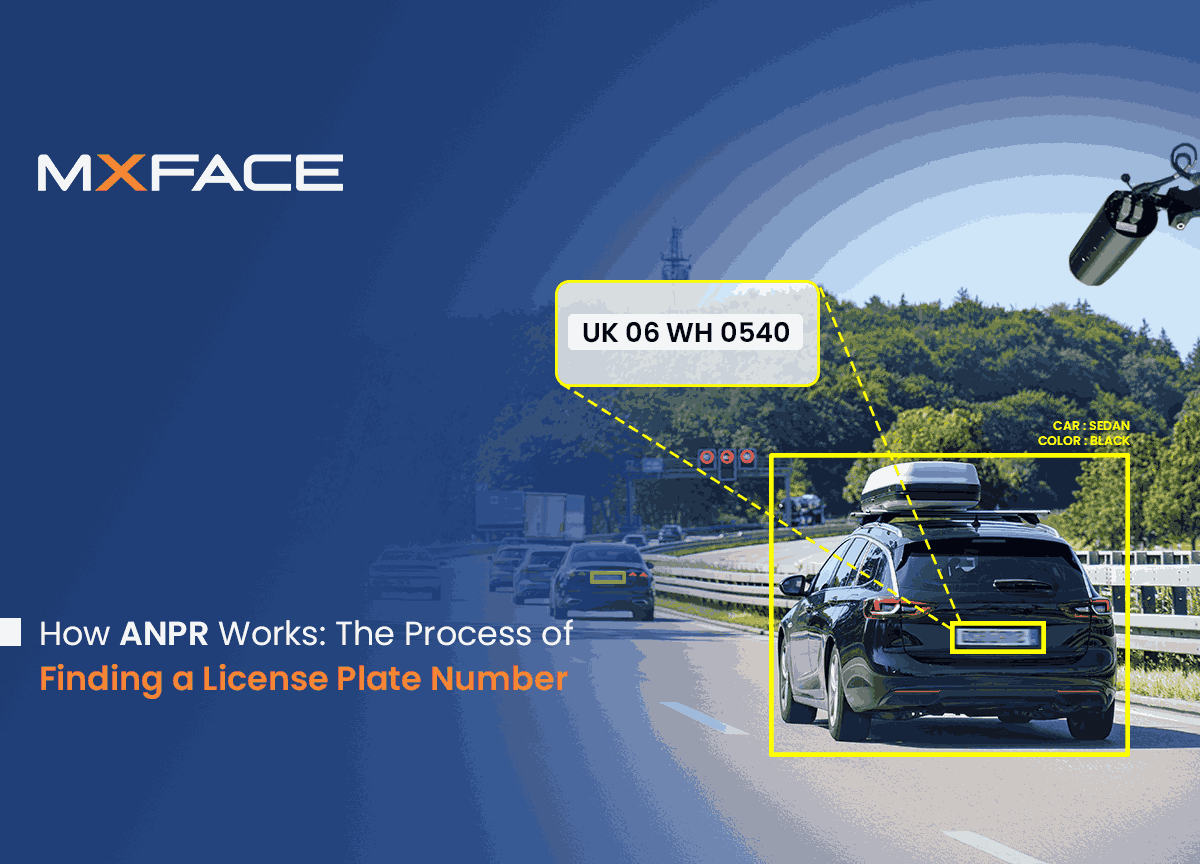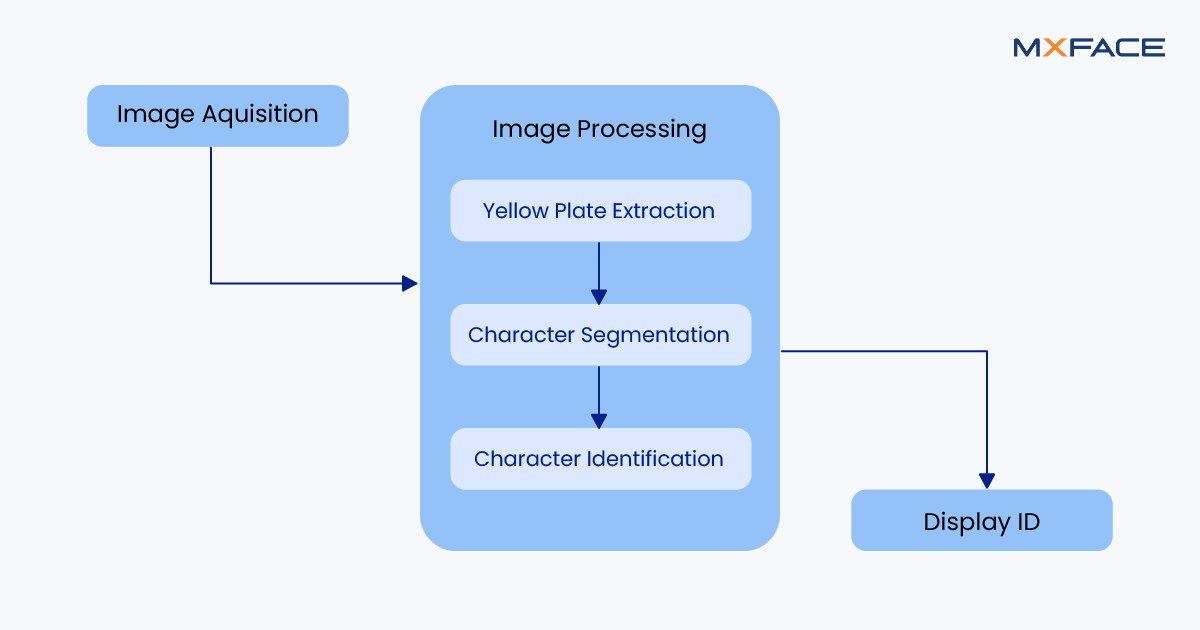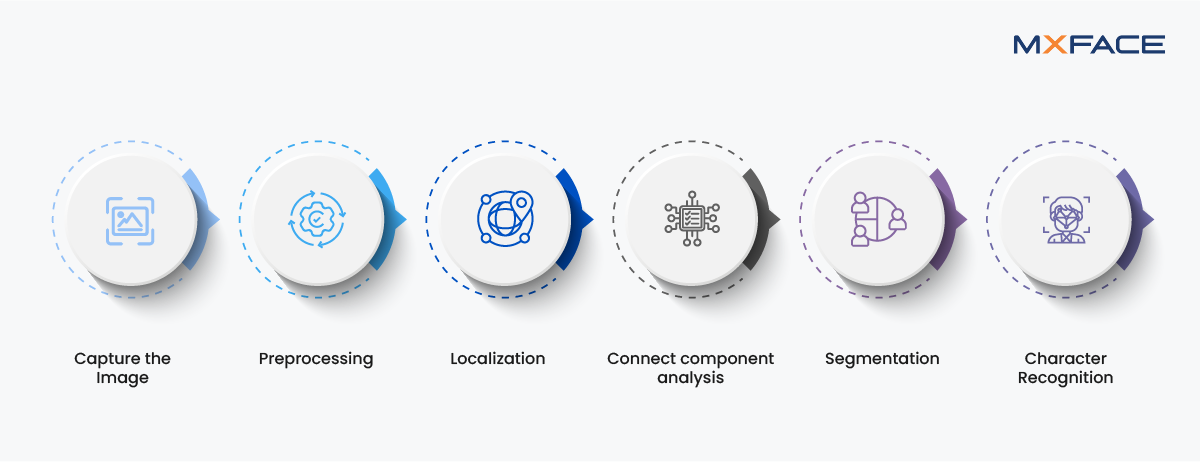How to Find a License Plate Number Using Computer Vision

License plate identification helps with traffic control, security, and record-keeping. Automatic License Plate Recognition (ALPR) systems make it easy to scan and read license plates from images, allowing vehicles to be identified instantly. This technology is changing the way we manage vehicle data, track, and maintain huge amounts of vehicles across different industries. According to research, the global market for automatic number plate recognition systems, valued at US$ 3.1 billion in 2022, is expected to reach US$ 6.8 billion in 2032. Let’s walk you through the license plate recognition technology as well as how to find a license plate number using computer vision.
What is Automatic Number Plate Recognition (ANPR)?
If you're looking for software to understand how to find a license plate number accurately and efficiently, automatic number plate recognition is the answer.
Automatic number plate recognition is a technology that uses pattern recognition to 'read' vehicle number plates. To put it simply, a sought-after ANPR camera 'photographs' or'reads’ the number plates of the vehicles that pass them. This 'photograph' is then fed into a computer system and further converted into data, which is processed through the ANPR system.
This technology has been around since 1976, but more recent technological advances have skyrocketed the potential for LPR to have a useful impact. For instance, existing systems for automated number plate recognition include:
- Camera(s)
- Controlled infrared light, which brightens up the plate and allows day and night operation, and is invisible to the driver
- PC running Windows or Linux to run the ANPR application, which controls the system, reads the images, scans number plate, and interfaces with other applications and systems.
- The software, such as MxFace, with the complete package
However, not all ANPR system cameras are the same, and selecting the right device requires careful consideration. Most ANPR systems are made specific to certain types of number plates, while some are developed based on certain specific criteria, which directly impact the performance and reliability of the installed system!

How does ANPR work?
At the core of ANPR, high-performance fiber optic sensors detect moving vehicles. A standard setup includes an interface device, a transmitter (LED), a receiver (photo detector), a feeder cable, and a fiber optic sensor. As a vehicle moves over the sensors, the signal levels change, capturing key movement data.
But how does this raw data turn into useful insights?
The output signals from the fiber optic sensors are processed by a data evaluation unit. The system’s algorithm calculates axle count, axle spacing, vehicle length, and classification using time, distance formulas, and micro-bending analysis. In simple terms, it figures out what kind of vehicle just passed through.
As a vehicle drives through, this IR curtain scans its shape, building a profile. Sounds perfect, right? Not quite. Since vehicles move at different speeds, a single curtain can't capture a full profile accurately.
That’s why speed matters. By measuring the distance between multiple IR curtains and the time it takes for a vehicle to pass, the system calculates its speed. Once speed is known, along with pulse frequency, the ANPR system accurately determines the vehicle's complete profile, irrespective of how fast it is moving.
How to Find a License Plate Number Using Computer Vision?

As mentioned earlier, custom-designed software applies an infrared sensor to trigger the image capture at the moment the car approaches a certain fixed distance from the camera. This process delivers an accurate plate clip, preserving the original aspect ratio and achieving read rates of 98-99% as a result. Let’s understand automatic license plate recognition's (ALPR) entire process in detail using computer vision.
1. Preprocessing
Before a system can read a license plate, it needs to clean up and simplify the image. That’s where preprocessing comes in and downsamples the image, reducing its size without losing critical information.
Next, the character clipper isolates each letter and number by dividing the plate into separate rectangular boxes. Each character gets its own space without any overlapping, ensuring accuracy.
The core algorithm behind this process relies on adaptive iterative thresholding and connected component analysis. In simple terms, it fine-tunes the image until each character is distinct and readable.
One of the smart things about this approach? The binarization and classification happen at the same time. So, as soon as the system reaches the right edge of the plate, it already knows what the characters are.
To improve accuracy, additional image enhancement techniques are used, such as resizing, noise removal, contrast adjustment, and normalization. Each step ensures the final output is clean, sharp, and easy to recognize even if the original plate was blurry or distorted.
2. License Plate Localization
After preprocessing, the license plate localization algorithm scans the preprocessed image to detect and extract the region of interest, i.e., the license plate itself.
To locate potential plates, the system uses techniques like edge detection, contour analysis, and template matching. These methods help identify areas in the image that resemble a license plate’s structure.
Once the plate is detected, the character clipper takes over. It splits the plate into multiple non-overlapping bounding boxes, each containing a single character. These characters are then mapped onto a predefined matrix, which standardizes their size for both training and recognition.
Since color and lighting can vary, the image needs further preprocessing. Convert it to grayscale. Removing color simplifies the image, reduces processing time, and minimizes errors caused by shadows or lighting changes.
Finally, the system applies a cascading classifier to the grayscale image. This classifier searches for rectangular patterns and other visual features that match a typical license plate design. Once potential plates are found, they are passed on for character recognition.
3. Segmentation
Once the license plate region is identified, the next step is segmenting individual characters. This is crucial because each letter and number needs to be processed separately for accurate recognition.
To achieve this, segmentation algorithms isolate each character and generate individual character images. Since license plates are typically horizontally aligned, the system applies a horizontal rank filter of size M × N pixels.
The filter moves across the image, sorting pixel intensities in ascending order. The central pixel’s intensity is then replaced with the 80th percentile of the sorted values. This process highlights the plate’s zone, forming a bright, elongated ellipsoid shape, while keeping the surrounding area dark.
But what if the plate isn’t perfectly aligned?
Due to variations in vehicle position and camera angles, plates can appear skewed. That’s where MxFace’s custom software comes in. It automatically clips the plate from the original image and corrects its alignment using a built-in deskewing algorithm.
Additionally, the algorithm detects bright spots on the edge image, allowing for precise horizontal segmentation. This ensures that the final image clip contains a clean, well-aligned license plate, ready for character recognition.
4. Character Recognition
Once the characters are segmented, the system moves to the final and most critical step i.e. optical character recognition. OCR analyzes the shape, patterns, and features of each character to determine the correct alphanumeric text. It understands their structure, ensuring high accuracy even in challenging conditions.
To enhance recognition, machine learning techniques like neural networks and support vector machines (SVMs) are often used. These models continuously learn from vast datasets, improving their ability to accurately identify characters—even when plates are blurry, tilted, or partially obstructed.
5. Verification
Verifying a vehicle number plate means checking whether it follows the specific format and rules set by the country or jurisdiction. These rules define the character count, character types (letters, digits, symbols), placement, and pattern requirements.
The verification process has two key steps:
A. Separating Dark and Light Areas
The algorithm first analyzes the plate’s background and characters. Some plates have dark backgrounds with light characters, while others are the opposite. Since the background is always larger than the characters, the system determines whether it’s lighter or darker and sets a threshold accordingly.
B. Checking Intensity Threshold
Next, the system compares the binarization threshold to the plate’s intensity median. If the median intensity of the plate zone is higher than the threshold, the plate is considered a valid candidate.
If the plate passes all checks, it moves on to the License Plate Character Recognition (LPCR) stage for final approval. However, noisy patterns sometimes slip through the previous tests. These are filtered out at this step.
If a plate fails any of the tests, the system rejects the candidate and loops back to the segmentation stage to try again. There is a maximum number of iterations, i.e., if no valid plate is found, the system stops the search and issues a failure message.
Once a plate passes verification, the system extracts and displays the recognized characters to the user. This ensures that only legitimate, readable plates are processed for further use in security, law enforcement, and automated vehicle tracking.
Why Finding a License Plate Number is Important?
Today, a full-fledged vehicle number plate recognition system provides an affordable solution for identification. With the use of this system, it is simpler to upload car photographs and properly identify and extract license plate numbers with a template-matching algorithm and is robust to charact As cities grow and traffic becomes more complex, MxFace’s license plate recognition system is becoming an essential tool for modern traffic management. With AI-driven technology and an adaptable number plate reader, MxFace helps make cities safer, smarter, and more efficient. Want to see how MxFace can help you find license plate numbers effortlessly? Contact us today.Identify License Plates with MxFace!


Comments